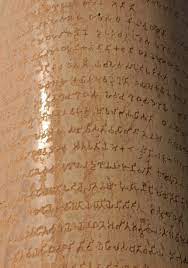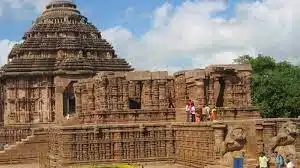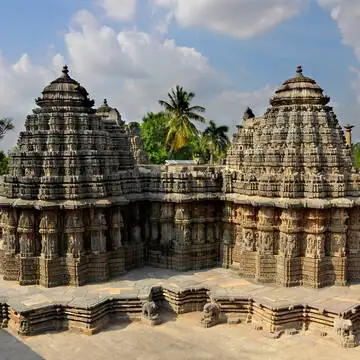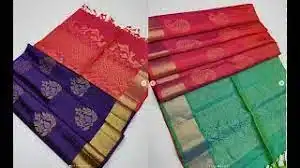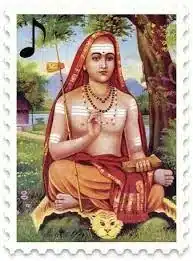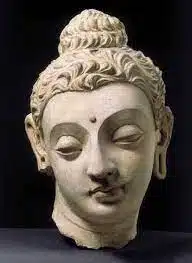Important Theatre Form of India:
BHAND PATHER (Kashmir): Theatre form of India
- It is a unique combination of dance, music, and acting.
- In this theatre form, music is provided with surnai, Nagaara, and dhol.
- Actors of Bhand Pather are mainly from the farming community.
- It is secular in outlook, although it is performed by Muslims.
NAUTANKI (Uttar Pradesh): Theatre form of India
- The plays are themed around historical, social and folk tales and delivered through dance and music.
RAASLEELA (Gujarat): Theatre form of India
- It is a dance drama enactment of the adolescent love stories of Krishna and Radha.
BHAVAI (Gujarat): Theatre form of India
- The instruments used in Bhavai are bhungal, tabla, flute, pakhaawaj, rabaab, sarangi, manjeera, etc.
- The theme of the play is generally romantic.
JATRA (Bengal): Theatre form of India
- Fairs in honour of gods, or religious rituals and ceremonies have within their framework musical plays are known as Jatra.
- Krishna Jatra became popular due to Chaitanya’s influence.
- The earlier form of Jatra has been musical.
MAACH (Madhya Pradesh): Theatre form of India
- In this theatre, form songs are given prominence in between the dialogues.
- The unique feature of this form is the dialogues, which are delivered in the form of couplets known as Rangat Dohas.
BHOANA (Assam): Theatre form of India
- It is a presentation of Ankia Naat.
- Sutradhar (Narrator) narrates the play and sings verses from holy texts.
- Songs and music are also a part of it.
TAMAASHA (Maharashtra): Theatre form of India
- It has evolved from folk forms such as Gondhal, Jagran and Kirtan.
- The unique feature of Tamasha is the presence of female actors, who play even the male roles.
DASAVATAR (Maharashtra and North Goa): Theatre form of India
- The performers personify the ten incarnations of Lord Vishnu-the god of preservation and creativity.
- The ten incarnations are Matsya (fish), Kurma (tortoise), Varaha (boar), Narsimha (lion-man), Vaman (dwarf), Parashuram, Rama, Krishna (or Balram), Buddha and Kalki.
KRISHNATTAM (Kerala): Theatre form of India
- It is a cycle of eight plays performed for eight consecutive days.
- The plays are Avataram, Kaliamandana, Rasa krida, kamasavadha, Swayamvaram, Bana Yudham, Vivida Vadham, and Swargarohana.
MUDIYETTU (Kerala): Theatre form of India
- It is usually performed only in the Kali temples of Kerala, as an oblation to the Goddess.
- The seven characters in Mudiyettu: Shiva, Narada, Darika, Danavendra, Bhadrakali, Kooli and Koimbidar (Nandikeshvara) are all heavily made-up.
YAKSHAGANA (Karnataka): Theatre form of India
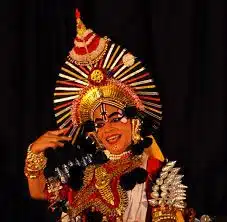
- Traditional theatre form of Karnataka, is based on mythological stories and Puranas.
- The most popular episodes are from the Mahabharata i.e. Draupadi swayamvar, Subhadra vivah, Abhimanyu vadh, Karna-Arjun yuddh and from Ramayana i.e. Raajyaabhishek, Lav-kush Yuddh, Baali-Sugreeva yuddha and Panchavati.
- Originated in the royals courts of the Vijaynagar empire and was performed by a particular community known as Jakkula Varu.
THERUKOOTHU (Tamil Nadu) : Theatre form of India
- The most popular form of folk drama of Tamil Nadu, literally means “street play”.
- It is mostly performed at the time of annual temple festivals of Mariamman (Rain goddess) to achieve rich harvest.
- At the core of the extensive repertoire of Therukoothu there is a cycle of eight plays based on the life of Draupadi.
- Kattiakaran, the Sutradhara of the Therukoothu performance, gives the gist of the play to the audience and Komali entertains the audience with his buffoonery.
THEYYAM (Kerala): Theatre form of India
- It is an open theatre.
- It is performed in front of the local temples to mainly honour the spirit of the ancestors besides gods.
ANKIA NAT (Assam): Theatre form of India
- It is performed in the style of an opera and depicts incidents from the life of Krishna.
- Sutradhar or narrator is accompanied by a group of musicians known as Gayan-Bayan Mandali.
- Use of masks to depict special expressions.
RAMLILA (Uttar Pradesh): Theatre form of India
- It is an enactment of Ramayana using songs, dances, and dialogue during the time of Dussehra.
- Performed by the Male actors.
BHUTA (Karnataka): Theatre form of India
- The traditional practice of worshipping the dead ancestors.
RAMMAN (Uttarakhand): Theatre form of India
- Dedicated to Bhumiyal Devta, the local deity.
- People of the Bhandari caste wear the sacred mask symbolizing Narasimha.
- Included in the UNESCO’s representative list of Intangible Cultural Heritage of Humanity.
DASKATHIA (Odisha): Theatre form of India
- In this form, there are two narrators- Gayaka, who is the chief singer and Palia, who is a co-narrator.
GARODAS (Gujarat)
- It uses painted pictures to narrate stories of romance and valor.
SWANG (Punjab and Haryana)
- They are mainly musical dramas, sung through verses, accompanied by the music of ektara, harmonium, sarangi, dholak, and khartal.
- Originally the theatre form Swang, was mainly music-based. Gradually, prose too, played its role in the dialogues.
- The softness of emotions, accomplishment of rasa along with the development of character can be seen in this theatre form.
- The two important styles of Swang are from Rohtak and Haathras.
- In the style belonging to Rohtak, the language used is Haryanvi (Bangru) and in Haathras, it is Brajbhasha.
VILLU PATTU (Deccan)
- Means bow-song.
- Stories of Ramayana are narrated using bow-shaped instruments.
Koodiyaattam
- one of the oldest traditional theatre forms of Kerala, is based on Sanskrit theatre traditions.
- The characters of this theatre form are: Chakyaar or actor, Naambiyaar, the instrumentalists and Naangyaar, those taking on women’s roles.
- The Sutradhar or narrator and the Vidushak or jesters are the protagonists.
- It is the Vidushak alone who delivers the dialogues. Emphasis on hand gestures and eye movements makes this dance and theatre form unique.
Also, refer :
- Download the pdf of Important MCQs From the History Of Ancient India
- List Of Important Inscriptions In India

